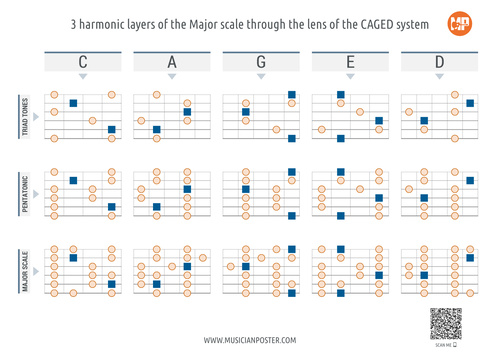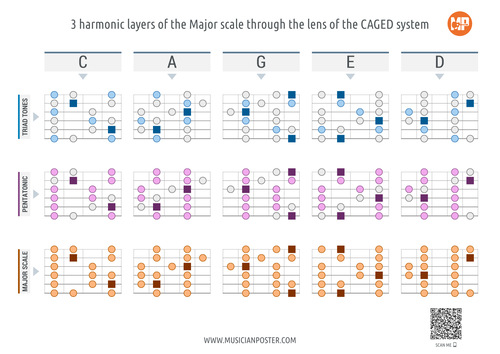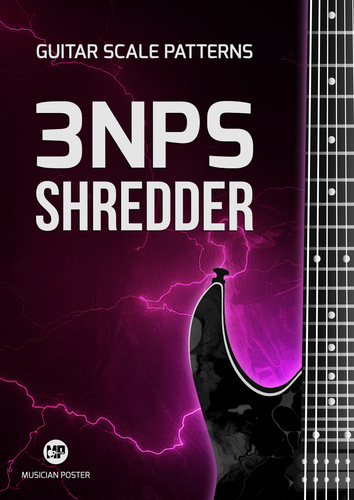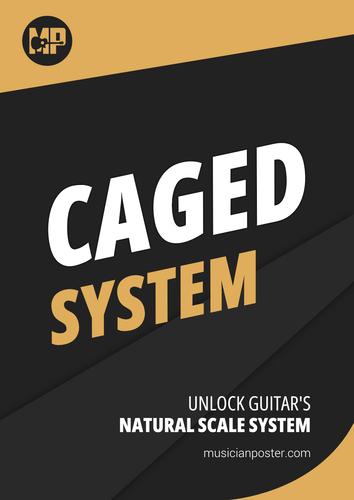Charts to help you learn the CAGED system for guitar and approach each of its patterns gradually by adding in more harmonic information.
Visual appearance
5 CAGED patterns are presented as 3 incremental harmonic layers:
- (1) root triad chord tones
- (2) major pentatonic tones
- (3) full Major scale
Each next layer adds extra notes to the previous layer until each CAGED shape has all notes of the Major scale.
- Playing triad only tones will give you notes of the Major chord.
- playing pentatonic layer will give you notes of the Major pentatonic scale.
- And playing the full scale version will give you notes of the full Major scale.
Squares with a darker fill represent scale root notes (tonic). Circles with a lighter fill are the rest notes of the given layer. This reference features flat style notes (empty circles). Even though it's intended for more seasoned guitar players, it's here as a variation that you simply might prefer over the other options. All diagrams are isolated from one another to let you focus on just a single pattern (and layer) at a time.
Practical application
You can think of these layers as notes which:
- (1) make up the chord
- (2) are next to the chord
- (3) are harmonically more distant from the chord (in other words, moving from consonant notes to less consonant notes in relation to the root triad tones)
What this practically means is that this separation lets you target these layers individually and evoke the right effect at the right time when you're soloing. And root tones have a stronger visual emphasis to provide soloing landmarks and a better overview of the shape's primary "anchor points" to help you memorize and internalize patterns of all layers.
One variation of this reference shows notes of the layers superimposed on the notes of the full major scale and highlights the non-layer tones as grayed out filler notes that you can use either as passing tones or simply visually observe and study how each layer shape "fits" within the full CAGED pattern.
Tip: These patterns are identical for all major keys. For example, to get CAGED patterns for the G-Major scale you just need to align the E-shape's (pattern 1) root tone on the 3rd fret of the lowest 6th string. The order of CAGED patterns never changes, and it's the same as the CAGED-word is spelled. So for our G-Major example the next shape towards the guitar's bridge would be D-shape, and the previous shape towards the guitar's nut would be the G-shape.















0 Comments